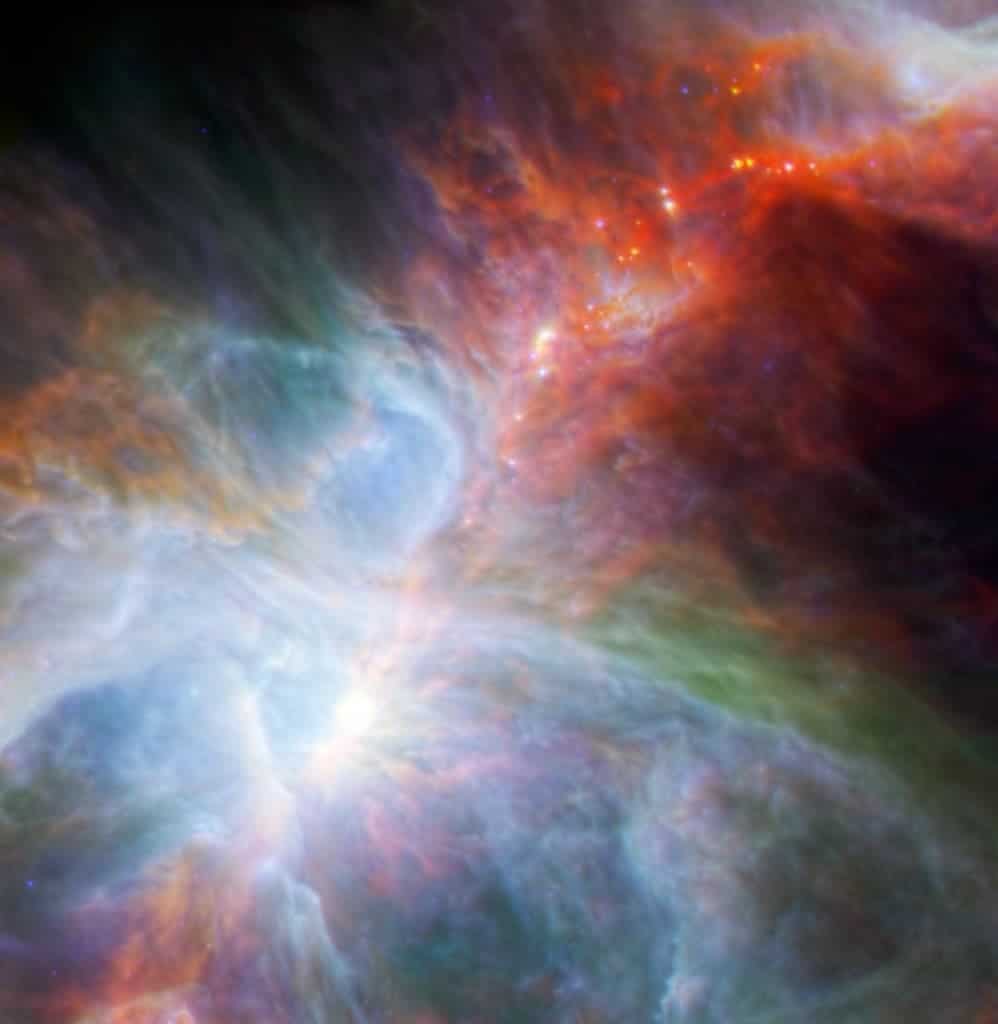Located beneath the three stars that form the belt of Orion the Hunter, the Orion Nebula is one of the dearest sights for amateur astronomers in the night sky, due to its great visibility, being one of the few nebulae visible with the naked eye. Also known under the name of the Sword of Orion, the nebula which is 1,350 light years away from Earth, holds a myriad of amazing gems in its pocket. One of them is a formation of “baby stars”, which astronomers recently caught changing color and brightness before their very eyes.

The image above shows embryonic stars – the colorful specks – within extensive gas and dust clouds. These were rendered through the combined far-infrared observations from the Herschel Space Observatory and mid-infrared observations from NASA‘s Spitzer Space Telescope, the rainbow of colored young stars representing different wavelengths of infrared light – the only kind that could be read through the thick layer of gas and dust clouds.
A new star forms when a clump of gas and dust, such as the one found in the Orion Nebula, collapses under its own gravity, creating a warm glob of material in the process, called a protostar, which is fed by a swirling disc. As material is steadily building up, some young stars accumulate enough for nuclear fusion to be triggered and thus catapult it towards stardom.
What’s interesting about these recently noticed young stars is the rate at which their brightness varies, some by as much as 20% over the six weeks they’ve been observed by the team of astronomers lead Nicolas Billot of the Institut de Radioastronomie Millimétrique, in Granada, Spain – a process which typically should have taken between a few hundred to a few thousands years.
To explain this peculiar phenomenon, the astronomers studying it have come up with two possible scenarios. One: it’s possible lumpy filaments of gas funnel from the outer to the central regions of the star, temporarily warming the object as the clumps hit its inner disk. Two: material might occasionally pile up at the inner edge of the disk and thus cast a shadow on the outer disk, temporarily causing it to darken.
“Yet again, Herschel observations surprise us and provide more interesting insights in to what happens during the very earliest phases of stars and planet formation,” comments Göran Pilbratt, ESA’s Herschel Project Scientist.
“Herschel’s exquisite sensitivity opens up new possibilities for astronomers to study star formation, and we are very excited to have witnessed short-term variability in Orion protostars. .. Follow-up observations with Herschel will help us identify the physical processes responsible for the variability,” Billot added.






